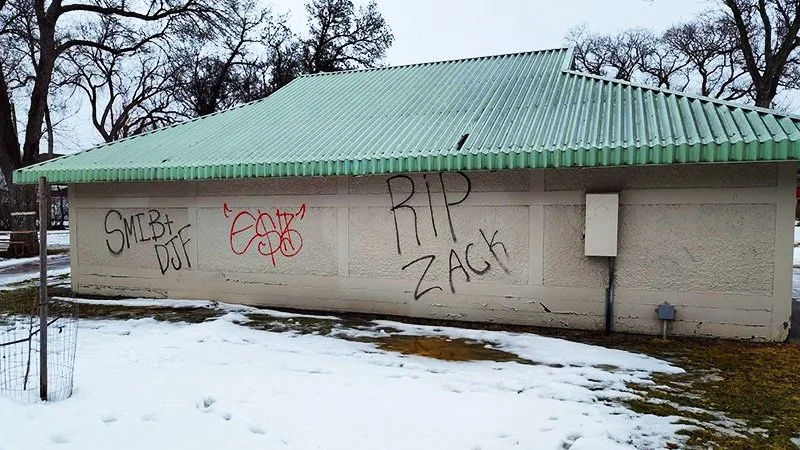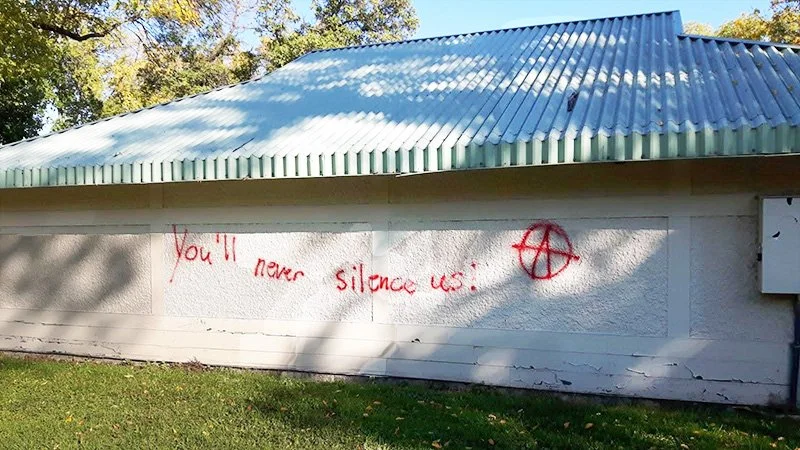Practical Ways Public Art Can Strengthen Your Community
Over the past few weeks, I’ve been thinking about public art and the vital role it plays in a city. It’s been on my mind because this coming weekend is Jane’s Walk weekend, and for the first time, I will be helping to lead a walk — one focused on public art.
New to the idea of Jane’s Walks? They’re a celebration of neighborhoods and cities, often from the point of view of everyday people, in honor of legendary urban thinker Jane Jacobs. These free, citizen-led walking conversations happen all over the world on the weekend closest to her May 5 birthday.
I’ve always been a big fan of the Jane’s Walk concept and have gone to several over the years, but I’d never helped to organize one. When a fellow neighborhood association committee member suggested that we plan a walk to show off our town's new median marbles, I immediately started making a mental list of other pieces of art that we could include.
We’d done a guided art walk a few summers ago, separate from Jane’s Walk, which had great attendance, and I knew there were plenty more pieces that we could showcase. Murals, garage doors, a community art wall and, of course, the median marbles would all be great stops. As a bonus, there was a mural in the planning stages that we could announce!
In preparing our Jane’s Walk, the local organizers invited us to fill out a form, where we provided a bunch of details so that they could create listings for all of this year's local walks. One of the form fields asked what ideas we hoped participants would consider because of the walk, and that’s when I had an interesting realization about the art in my neighborhood.
We typically think of public art as about adding character, personality, beauty or visual interest to a place. Part of that can be communicating ideas about a place’s values, past, hopes for the future, or its community. That’s how I’d always perceived public art. That’s not to say that I thought of it as a superficial or merely aesthetic part of the urban environment, but I had never really thought about the potential of public art as a functional part of the built environment until I was mulling over ideas for this Jane’s Walk. (I think Jane would be pleased!)
Yes, we’ve got some traditional murals in our neighborhood: large-scale artworks that bring beauty and interest to the public realm. They convey a sense that someone cares about this place and is investing in it.
But we also have many painted garage doors. When I first stumbled across them, I thought, "That’s so cool; what a nice gift to the neighborhood." When I spoke to the residents, though, I learned that several of them had been painted deliberately to discourage ongoing graffiti issues — a plan that had been successful!
In the case of these median marbles, public art can be traffic calming. The point here was to add “edge friction”: visual complexity that influences how drivers perceive and respond to the street, with the goal of reducing travel speed. (The colorful and community-created designs painted on the marbles were a bonus.) Another classic example of traffic calming through public art is colorfully painted curb extensions.
Public art can help to reinforce that a community has agency and personality; a heart and soul.
The process of creating public art, and the connections that are made and nurtured during this process, can be as valuable as the end result. As Gracen Johnson says, public art "can change the way people feel about each other and their ability to shape their environment.”
After years of persistent and ongoing graffiti, we hope to paint a mural on this park building this summer.
From planning and design to painting and final touch-ups, the project will be untaken entirely by a diverse and multi-generational team of neighborhood residents, each sharing their skills, knowledge and expertise. My friend Brian Pincott, who is leading his own Jane’s Walk this year, categorizes this type of opportunity to interact as the sort of “enabling infrastructure” that is essential to healthy and connected neighborhoods.
Of course, public art isn’t a cure-all. I agree with Rachel Quednau’s assessment of the matter:
“... public art cannot be used to cover up failures in urban design. A neglected, unproductive street with a sculpture on the corner, is still a neglected, unproductive street. On the other hand, a neighborhood full of people who care, who are taking small steps to make the streets better every day? Well, that neighborhood could benefit tremendously from a dose of public art. It doesn't take a million-dollar grant or a famous artist. It just takes some strong citizens with creative vision who want something better for their place.”
The revelation I had while signing up to host a Jane’s Walk was an encouraging reminder that art is an underused part of the city-healing toolbox. It is so important not to underestimate its potential. In our North American culture, where it can be an uphill battle to get changes made to the built environment, art is often overlooked, but almost always an option. It’s far less likely to receive pushback, and often fairly accessible thanks to grants, donations, and local talent. Public art may well be the next smallest step you can take, one that’s fully within reach.











Emma Durand-Wood likes walkable cities, front porches, street trees, bumping into neighbors, riding her bike, downtowns, and any excuse to check out a new coffee shop, bakery, or shop. A Winnipegger by choice, she lives in Elmwood with her husband and three children. You can connect with her on Twitter @emmaewood.